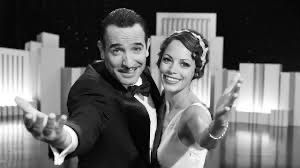The Art of Nonverbal Communication: Speak Without Words
- khailareyno
- Apr 22, 2024
- 6 min read
Updated: Apr 30, 2024

The power of nonverbal communication in screenwriting lies in its ability to convey meaning, emotion, and depth without the need for words. Nonverbal cues such as body language, facial expressions, and gestures can add layers to a character's personality, reveal their inner thoughts and feelings, and enhance the overall storytelling experience.
Every movement, gesture, and expression we make can convey powerful messages. From a smile that shows happiness to a furrowed brow that signifies concern, our faces are like canvases of emotion. And then there's body language, which can speak volumes about a person's confidence, comfort, or even their hidden intentions. The way we stand, walk, and use our hands can all add layers of meaning to our interactions.
In screenwriting, this ability of nonverbal communication holds immense power. It can convey meaning, emotion, and depth without relying on words, making characters feel authentic and relatable. By paying attention to the subtleties of nonverbal communication and incorporating them into our scripts, we can create more nuanced and realistic portrayals, allowing the audience to connect with the story on a deeper level. It elevates the storytelling experience, making it truly memorable.
Next, let's explore a few examples of how nonverbal communication can be powerful in screenwriting:

Character Development
Nonverbal cues are a vital aspect of character development in storytelling, as they offer a window into a character's inner world. These cues go beyond words, providing insights into a character's personality, motivations, and emotions in subtle yet impactful ways.
For example, the way a character holds themselves—whether they stand tall and confident or slouch with insecurity—can reveal volumes about their self-perception and demeanor. Similarly, the gestures they use, such as hand movements or facial expressions, can convey their emotional state, whether it's excitement, frustration, or sadness.
Furthermore, nonverbal cues can also provide clues about a character's past experiences and how they shape their current behaviour. For instance, a character who flinches at sudden movements may hint at a history of trauma or abuse, adding depth to their character and influencing how they interact with others.
Further examples include:
A person who nervously taps their foot or bites their lip in a stressful situation may convey their anxiety and vulnerability without needing to explicitly state it in dialogue.
A person who stands with their arms crossed and avoids eye contact may suggest defensiveness or mistrust.
A person who maintains strong eye contact and stands with an open posture can convey confidence and assertiveness.
A person who sighs and slumps their shoulders after receiving bad news can convey sadness or disappointment.
A person who hugs themselves or wraps their arms around their body can suggest self-soothing or insecurity.
Nonverbal cues offer a rich tapestry of information that adds layers to a character, making them more three-dimensional and relatable to the audience. By incorporating these cues into character development, writers can create more authentic and compelling characters that resonate with viewers on a deeper level.
Emotional Depth
Nonverbal cues play a crucial role in creating emotional depth in characters and scenes. They allow characters to express a wide range of feelings without the need for words, creating a deeper connection with the audience. These cues, which include facial expressions, body language, and gestures, can convey complex emotions that words alone may struggle to express.
A simple gesture, such as a smile, can communicate joy, happiness, or amusement, instantly conveying a character's positive emotions. On the other hand, a tear rolling down a character's cheek can convey sadness, grief, or pain, eliciting empathy and sympathy from the audience.
These cues can also add nuance to a character's emotions, showing subtle shifts and complexities in their feelings. For example, a character's body language—such as a tense posture or clenched fists—can indicate underlying anger or frustration, even if their words suggest otherwise.
Further examples include:
Fear/Anxiety: A person's wide eyes, rapid breathing, and tense body language can indicate fear or anxiety. This can be portrayed in a suspenseful scene where a character is in danger or facing a threatening situation, such as being chased or trapped.
Surprise/Shock: A persons's eyes widening, their mouth slightly agape, and their body freezing in place can convey surprise or shock. This can be shown in a scene where a character receives unexpected news or witnesses a surprising event.
Disgust/Revulsion: When feeling disgusted or revolted, a person may wrinkle their nose, avert their gaze, and exhibit a grimace or frown, indicating their aversion to something unpleasant.
Overall, nonverbal cues are powerful tools for evoking emotions in storytelling, allowing characters to effectively convey a range of emotions, enriching communication and adding depth to interpersonal interactions.
Subtext
Nonverbal cues are incredibly effective tools for conveying subtext in screenwriting, adding layers of meaning to a scene that may not be explicitly stated in the dialogue. These cues, which include body language, facial expressions, and gestures, can provide insights into a character's true thoughts, feelings, and intentions.
For example, in a scene where two characters are having a seemingly casual conversation, one character may avoid eye contact and shift uncomfortably in their seat. These nonverbal cues suggest that this character is hiding something or feeling guilty, adding tension and intrigue to the scene.
Further examples include:
A person who clenches their fists while smiling may appear friendly on the surface but convey underlying aggression or tension.
A person who smiles while delivering bad news may convey sarcasm or insincerity, adding depth to their words.
Two people are negotiating a deal, one person has crossed arms, narrowed eyes, and guarded posture can indicate their distrust of the other person, adding conflict to the scene.
In a romantic scene, subtle glances, smiles, and touches between two characters can convey their mutual attraction, even if they are not explicitly expressing their feelings in words.
A person who invades another character's personal space, uses aggressive gestures, and maintains a stern expression can convey intimidation and dominance.
By incorporating these subtle nonverbal cues into their writing, screenwriters can create more dynamic and engaging scenes, allowing the audience to read between the lines and connect more deeply with the characters and the story.
Visual Storytelling
Visual storytelling is a powerful tool in screenwriting that uses images, actions, and nonverbal cues to convey information, evoke emotions, and drive the narrative forward. It allows screenwriters to communicate complex ideas and themes without relying solely on dialogue. It encompasses a wide range of techniques, including framing, camera angles, lighting, and editing, all of which work together to create a cohesive and compelling visual narrative.
For example, a close-up shot of a character's face can convey their emotions in a more intimate and immediate way than words alone. Such as the subtle twitch of an eyebrow or the quiver of a lip can speak volumes about a character's inner turmoil or conflicting feelings. Similarly, the use of body language, such as a character's posture or physical movements, can reveal their intentions, motivations, and emotional state.
By incorporating nonverbal cues into their scripts, screenwriters can create more immersive and impactful stories that resonate with audiences on a deeper level. Visual storytelling, when combined with effective use of nonverbal cues, can elevate a screenplay that feels more authentic and compelling.
Enhanced Dialogue
Nonverbal cues play a crucial role in complementing and enhancing dialogue in screenwriting, adding nuance and realism to conversations. These cues can convey a character's emotions, intentions, and attitudes, providing additional layers of meaning that enrich the dialogue.
For example, a character who nods while listening can indicate agreement or understanding, reinforcing the meaning of their words. This nonverbal cue can add depth to the scene, showing the character's engagement with the conversation and their willingness to cooperate or support the other speaker.
Similarly, a character who avoids eye contact while speaking may indicate dishonesty or discomfort, adding tension and intrigue to the dialogue. This subtle cue can suggest that the character is hiding something or feeling insecure, adding complexity to their interactions with other characters.
Incorporating nonverbal cues into dialogue not only adds depth and authenticity to characters but also enriches the storytelling experience, allowing for more nuanced and compelling interactions that resonate with audiences.
The Power of Nonverbal Communication | Joe Navarro | TedxManchester
Overall, the power of nonverbal communication in screenwriting lies in its ability to enhance character development, convey emotion, add subtext, and enrich the visual storytelling experience. These subtle cues, including gestures, facial expressions, and body language, serve as a powerful tool for screenwriters to convey complex emotions, relationships, and subtext without the need for explicit dialogue. Ultimately, mastering the art of integrating nonverbal cues into dialogue can elevate a screenplay, creating a more compelling and memorable viewing experience.


